
Rhagionidae or snipe flies are a small family of flies. They get their name from the similarity of their often prominent proboscis that looks like the beak of a snipe.
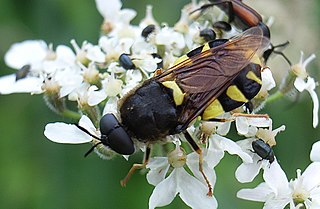
Stratiomyini is a tribe of flies in the family Stratiomyidae.

Oplodontha viridula, the common green colonel, is a European species of soldier fly.
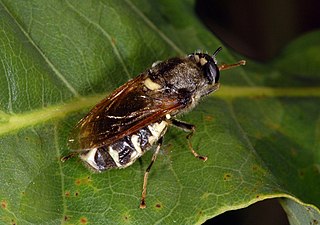
Stratiomys singularia, the flecked general, is a Palearcticspecies of soldier fly.

Sargus flavipes, the yellow-legged centurion, is a European species of soldier fly.

Sargus bipunctatus, the twin-spot centurion, is a European species of soldier fly.

Sargus cuprarius, the clouded centurion, is a European species of soldier fly.
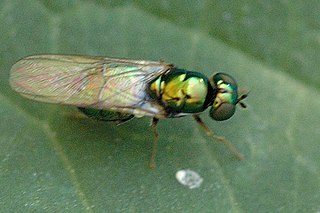
Microchrysa polita, the black-horned gem, is a species of soldier fly found in Europe, Asia, and North America.
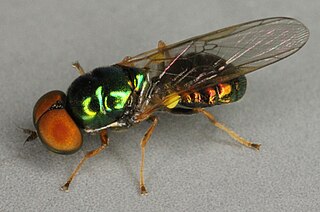
Microchrysa flavicornis, the green gem, is a European species of soldier fly.
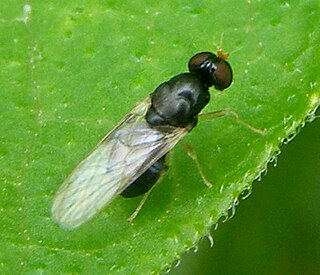
Pachygaster leachii, the yellow-legged black, is a European species of soldier fly.

Pachygaster atra, the dark-winged black, is a European species of soldier fly.
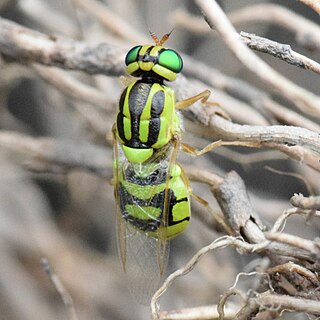
Oxycera trilineata, the three-lined soldier, is a Palearctic species of soldier fly. Boldly marked in yellowish-green and black, it is found in a variety of wetlands, including pools, ditches, fens and swampy river margins. It is found in North European Russia up to Leningrad; Central Asia, Siberia. Western Europe, north up to southern Sweden.

Oxycera pardalina, the hill soldier, is a European species of soldier fly.
Oxycera nigricornis, the delicate soldier, is a European species of soldier fly.

Oxycera morrisii, the white-barred soldier, is a European species of soldier fly.

Nemotelus uliginosus, the barred snout, is a Palearctic species of soldier fly.

Nemotelus notatus, the flecked snout, is a European species of soldier fly.

Nemotelus is a genus of soldier flies in the family Stratiomyidae. Nemotelus is known from the Nearctic, Afrotropical and the Palaearctic regions.

Beris geniculata, the long-horned black legionnaire, is a European species of soldier fly.

Stratiomyinae is a subfamily of flies in the family Stratiomyidae.


















